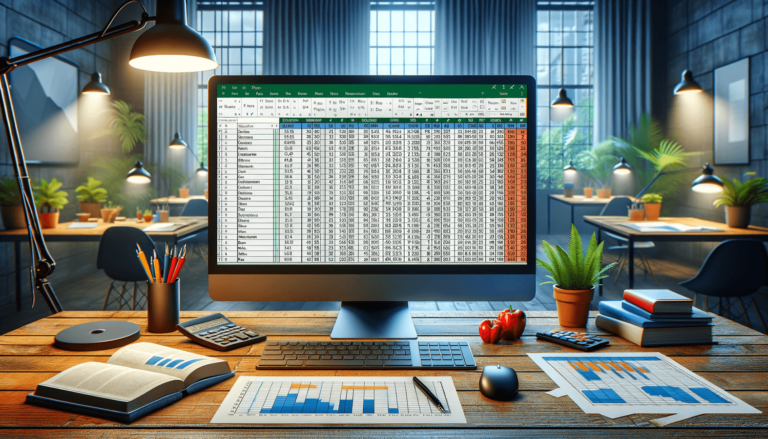

If you have been using Excel for any amount of time, you are probably familiar with the fact that Excel recognizes different data types – numbers, text, and dates among others. At times, you may find that the data type you imported, pasted in or typed, is different from what you need it to be. Altering the data type of a cell or range in Excel is a straightforward and critical task that you must know. Changing data types can impact how your spreadsheets are used, and also affect the accuracy of analysis performed on the data. In this post, we discuss how to change data type in Excel, step-by-step.
Having data categorized correctly by type makes it much easier to interpret and analyze. For example, if you have a column of numbers that are formatted as text, you will not be able to use those numbers in formulas or sort them in numerical order. However, if you can change their data type to “number,” all of these issues will no longer be a problem. Also, when you’re working with a lot of data, proper data type formatting can make your work more manageable and efficient.
Choose the range of cells that you want to convert. It can be a single cell, a group of cells, or an entire column or row.
Right-click on the selected data, and then click on “Format Cells.” Alternatively, press “Ctrl+1” on your keyboard to open the “Format Cells” dialog box.
Once the “Format Cells” dialog box appears, you will see several tabs at the top. Click on the “Number” tab and select your desired data type. For instance, if you want to change the data type to “number,” select “Number” from the Category list and click “OK.”
After applying the new data type, verify that your cells contain data in the correct format. You can do this by checking the cell formatting or by inspecting the cell data to ensure the conversion worked as intended.
If you want to convert a column of dates, you can choose the “Date” category and then select the preferred date format. If you’re trying to convert text to a date, you’ll have to use the “Text to Columns” feature under the “Data” tab and follow the prompts.
Changing data types in Excel is a simple task, but it’s critical for efficient data analysis and interpretation. This guide should walk you through everything you need to know to change data types in your spreadsheet. Have fun exploring the different ways you can format your data!
In addition to changing the data type via the “Format Cells” dialog box, you can also use Excel functions to convert data types. Below are a few common functions:
The CONVERT function can convert between various units of measurement or convert numbers from one measurement system to another. This function can be beneficial for tasks such as converting temperatures or weights.
The TEXT function is used to convert numbers or dates to text. This function is helpful when you require numbers or dates in a specific text format, or when you want to join numbers or dates with text.
The DATEVALUE function is used to convert a date represented by text to an actual date in Excel. This function can be beneficial in extracting the date value when it is embedded with other characters in a cell.
Custom number formatting in Excel is yet another way to modify the display of values. Custom number formatting allows you to control the formatting of negative numbers, decimals, thousand separators, and much more. With these types of modifications, you can accomplish all sorts of formatting goals without having to change the underlying data type.
Changing the data type of your Excel data is relatively simple, but it is also an essential skill to have when working with large or complex spreadsheets. Whether you use the “Format Cells” dialog box, functions, or custom number formatting, knowing how to convert data types will make data manipulation less frustrating, quicker, and more efficient.
Here are some of the most frequently asked questions about changing data types in Excel.
Yes, you can change data type for specific cells within a column. Just select only those cells whose data type you want to modify instead of selecting the whole column.
No, if you have a large number of cells to modify, you do not need to change them manually one by one. You can change the format for the entire column by selecting the column header before following the steps to change the data type.
You can convert text values to numbers in Excel by using the built-in VALUE function. Enter the function: =VALUE(cell reference), select the cell that contains the text value you want to convert to a number, and press enter.
Excel does not recognize dates that are formatted as text because the cell value is recognized as a string and not as a date. Excel requires dates to be registered as date values so that it can comprehend them as date formats such as sorting and calculations.
Yes, you can undo the adjustments made when you change a data type by using the “Undo” function or by pressing the “Ctrl + Z” keys on your keyboard. Remember that after undoing the changes, you will need to start over to achieve the desired data type.
Explore the world of Microsoft PowerPoint with LearnPowerpoint.io, where we provide tailored tutorials and valuable tips to transform your presentation skills and clarify PowerPoint for enthusiasts and professionals alike.

Your ultimate guide to mastering Microsoft Word! Dive into our extensive collection of tutorials and tips designed to make Word simple and effective for users of all skill levels.

Boost your brand's online presence with Resultris Content Marketing Subscriptions. Enjoy high-quality, on-demand content marketing services to grow your business.
